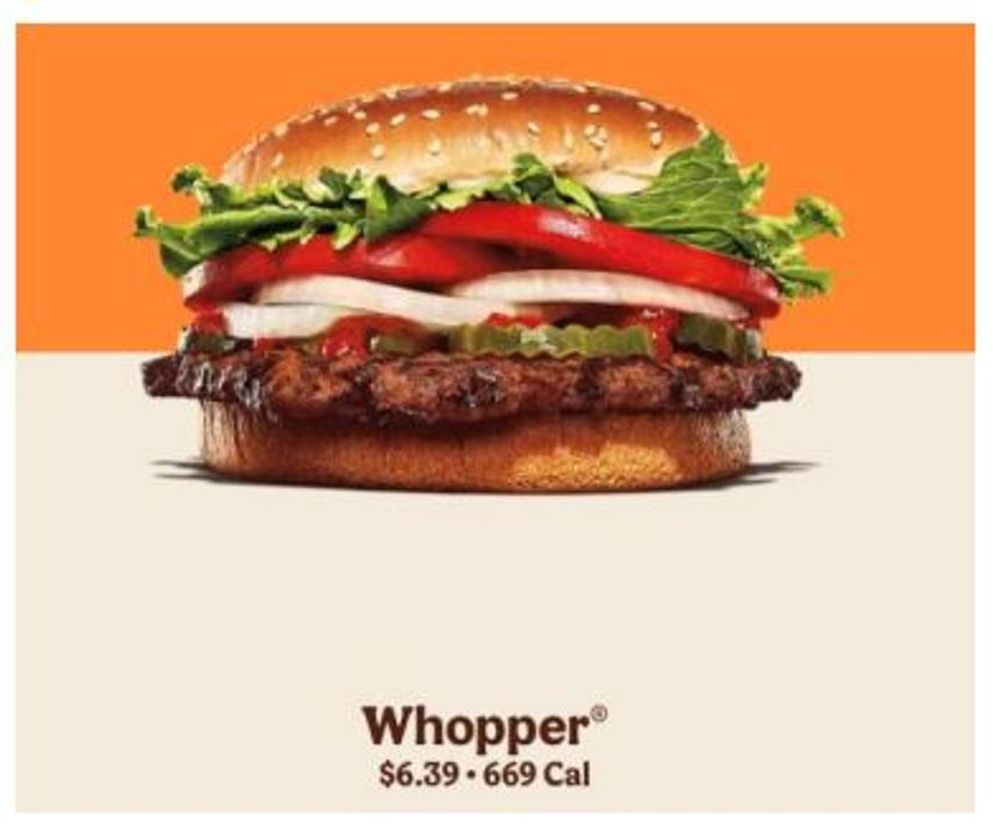- with readers working within the Chemicals industries
A group of consumers sued Burger King, alleging that photos of the burgers in the company's advertising misled them about what they were going to get. Burger King moved to dismiss, but a federal district court in Florida allowed the case to proceed. Here's why.
In most states, in order to prove false advertising, you need to show that a "reasonable consumer" would be misled. That requires courts to ask whether a consumer, acting reasonably under the circumstances, would be misled in a manner that would cause injury to the consumer. In its motion to dismiss, Burger King argued that reasonable consumers wouldn't be misled here, because "styling ingredients for photographic purposes, such as by pulling them forward to a head-on image clearly shows what the burger contains, is not misleading to a reasonable consumer visiting a quick service restaurant, and no precedent suggests otherwise."
Significantly, the court acknowledged that food styling is a common practice and that consumers aren't ordinarily deceived by that. As the court explained, "It's true (of course) that the exaggeration of an item's quantity (and, for that matter, quality) with idealized imagery is an extremely common technique in the world of food advertising. To the extent that BKC argues that reasonable consumers usually aren't fooled by these types of advertisements, we agree."
This conclusion makes total sense, of course, for two important reasons. First, in most cases, reasonable consumers aren't going to think that a stylized version of a restaurant food item is an exact replica of how the food will look in a restaurant. In other words, consumers – who are well familiar with food advertising – should understand that beauty shots of food are nothing more than that. Second, reasonable consumers already know what burgers looks like when you buy them from a quick service restaurant, and no stylized beauty shot of a burger is going to change that.
So, why did the court allow the case to proceed?
Although the court wasn't concerned about the food styling aspects of the case, the court found that the plaintiffs had properly alleged – at least for purposes of a motion to dismiss – that the advertising misled consumers about the size of the burgers being sold. Specifically, the plaintiffs had alleged that the burgers (and the amount of beef) shown in Burger King's current ads are larger than those shown in the company's advertisements from back in 2017. At least at this stage of the case, the court determined that this was enough of an allegation to allow the case to continue.
It's way to early in the case to know whether the plaintiffs will be able to prove their case. But, it seems like there are some serious hurdles to overcome here. First, is the current advertising really making any kind of objective representation about the size of the burger? It seems hard to believe that it is. Second, even if the burger appears to be larger in the current advertising than it did almost a decade ago, its strains credulity to think that consumers saw and remembered the ads from years ago and had them in mind when looking at Burger King's current advertising. Third, had these consumers never really been to Burger King before? The complaint certainly doesn't allege that. How do you mislead someone about a product that they are already fully familiar with?
What are some important takeaways for advertisers?
The good news for advertisers, advertising agencies, commercial production companies, and their food stylists is that the court acknowledges that food styling in advertising is a common practice and that consumers are not ordinarily misled by that.
Advertisers are certainly responsible for ensuring that their advertising is truthful and not misleading. And, if you're doing a product demonstration, that product demonstration should be real. This case essentially recognizes, though, that stylized versions of food are often just beauty shots and won't be understood by consumers to be actual demonstrations.
What's important to remember, though, is that even if you're not doing an actual "product demonstration," the advertising may communicate other claims that require substantiation. Here, the court found that the plaintiffs properly alleged – at least for purposes of a motion to dismiss – that other claims were communicated. While there are serious questions about whether the plaintiffs will be able to prove their case here, the decision does highlight an important issue for advertisers to consider when developing visuals for advertising – what are the express and implied claims being communicated and do I have proof to back them up?
Coleman v. Burger King Corporation, Case No. 22-cv-20925 (S.D. Fla. May 5, 2025).

The content of this article is intended to provide a general guide to the subject matter. Specialist advice should be sought about your specific circumstances.


